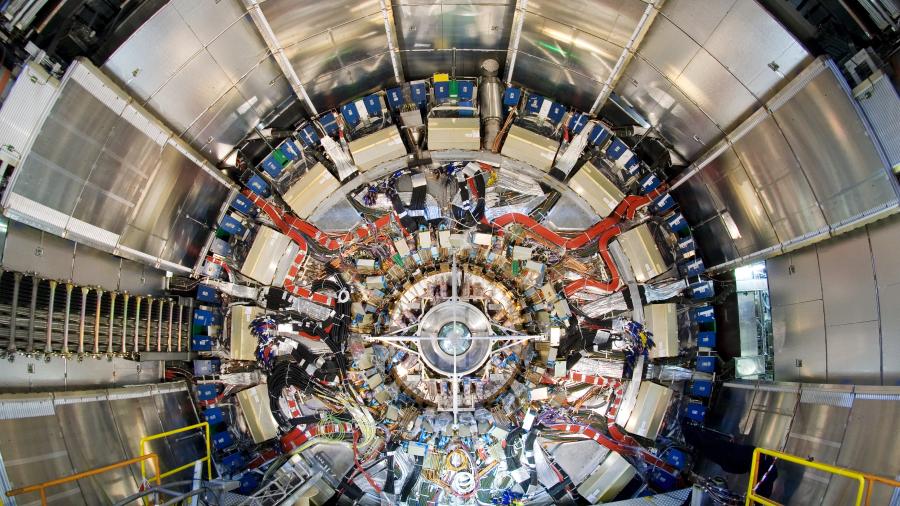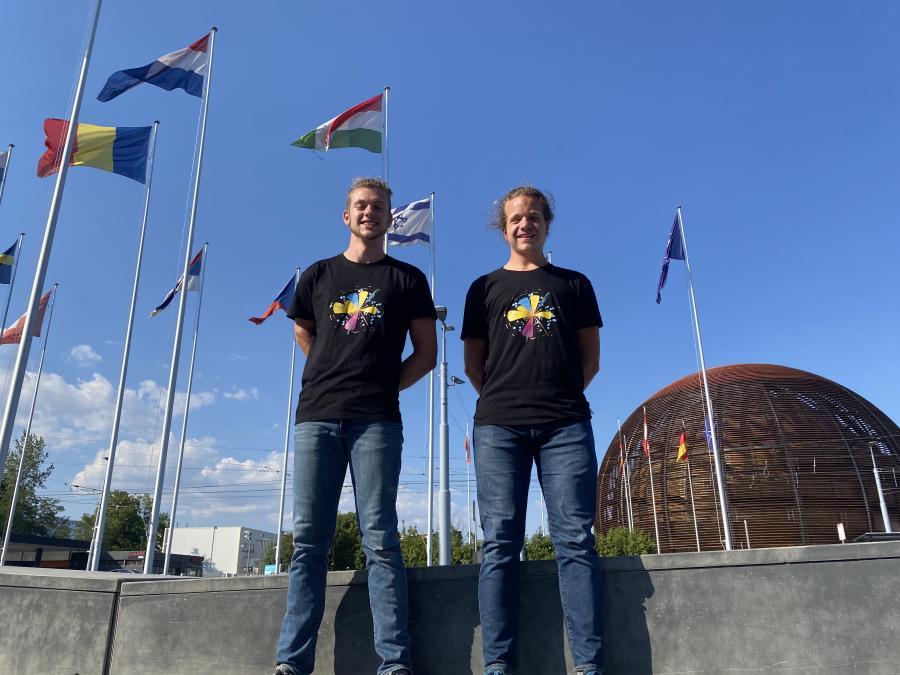Westmont Magazine Grant Expands Search for Dark Matter

Dark matter, which makes up the majority of the mass in the universe, remains elusive about the details of its composition. A Westmont researcher who persists in his search for evidence of the mysterious stuff has received a $200,000 grant from the National Science Foundation for his work with the ATLAS experiment at the Large Hadron Collider (LHC) at CERN, a particle physics laboratory in Geneva, Switzerland.
Ben Carlson, assistant professor of physics, will focus his research on operating CERN’s dark matter trigger, which allows physicists to search for signs of “invisible particles” by using the conservation of momentum from visible deposits of energy in the detector to infer the presence of particles that don’t leave a signature in the detector. “Sifting through the data, we’ll look for new particles,” Carlson says. “Westmont students and other collaborators join me in seeking possible scenarios not previously explored.”
In July, the LHC started its third operational round at higher energy and increased event samples. Carlson says it’s possible that evidence for Beyond the Standard Model (BSM) physics could emerge in the next few years.
Two Westmont students, Sean Ryan ’24 and Chandler Baker ’24, spent the summer at CERN ensuring that every part of the experiment worked smoothly and the detector produced high-quality data. “As the experiment has 100 million readout channels, many things can go wrong,” Carlson says. “Sean and Chandler joined a small work team that ensured the dark matter trigger worked correctly. Experimental physics always has surprises, but ATLAS has run smoothly — and our students helped make that happen.”
Carlson has also been developing and publishing new methods of evaluating machine-learning algorithms on custom field-programmable gate array (FPGA) hardware. “That means they can be run fast enough to make the first decision in the trigger sequence, which is where we throw away the majority of data,” he says. “I’m excited to see how these methods get deployed in the experiment and affect our reach for new particles in the coming years.”
In May, Carlson invited nearly 40 local high school students enrolled in an AP physics course to Westmont’s campus for a hands-on exploration of how the universe behaves. At the event, “Understanding Physics from Galaxies to Particles,” Carlson asked the fundamental questions: What is the universe made of? What are the building blocks — the fundamental particles? The students toured ATLAS virtually and developed a basic understanding of how researchers study fundamental particles, quarks and gluons to better understand how nature works. “But the Standard Model doesn’t describe most of the mass in the universe,” Carlson says. “It comes from an observation in astrophysics, but we can’t explain it based on particles we produce in the lab. There are a lot things scientists don’t understand, and you can be part of solving these questions.”
The students rotated through four stations in Winter Hall and at the observatory, learning about the decay process at a radio activity demonstration, using a cloud chamber to detect particles and observing solar flares on the sun.

